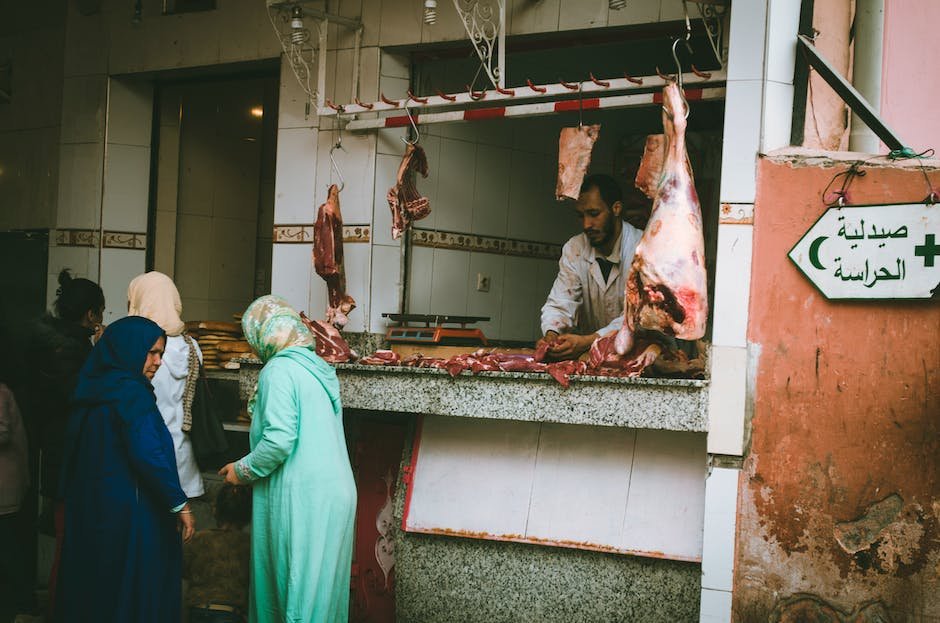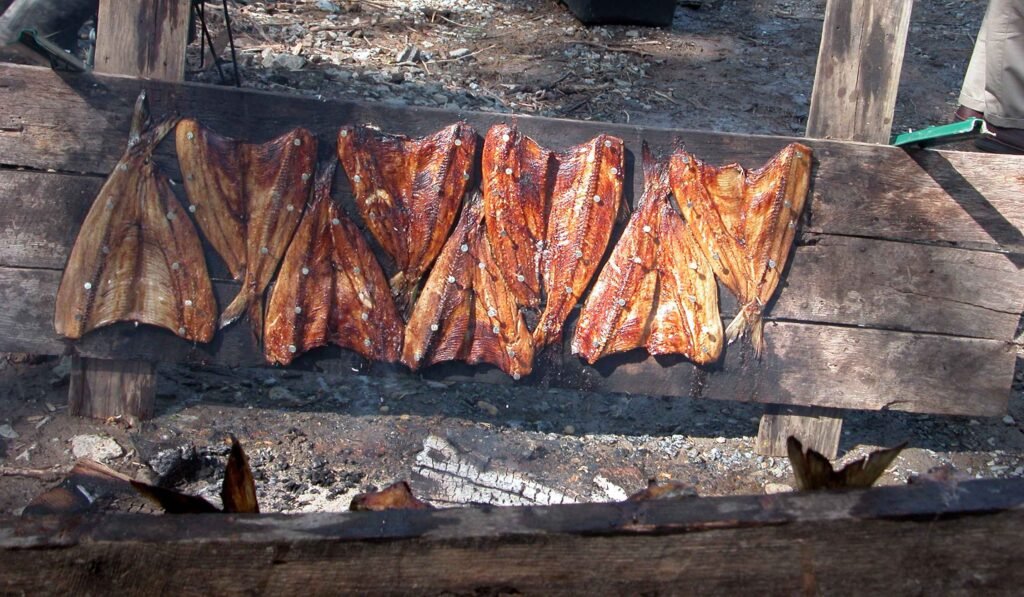Now Reading: How to Make Your Own Cured Meats
-
01
How to Make Your Own Cured Meats

How to Make Your Own Cured Meats
From the depths of ancient civilizations to modern gastronomy, the art of curing meats has stood the test of time, enticing carnivores far and wide with its tantalizing flavors and commitment to craftsmanship. There’s something undeniably magical about transforming ordinary cuts of meat into delectable slices of sheer culinary delight, and the best part? You can do it in the comfort of your own kitchen. Whether you’re a novice foodie eager to embark on a delectable adventure or a seasoned cook seeking a new culinary challenge, this guide will take you on a journey through the intricate world of homemade cured meats. So sharpen your knives, dust off your apron, and prepare for a mouthwatering immersion into the centuries-old knowledge that brings forth the extraordinary flavors we all savor. Get ready to unlock the secrets of the ancients and discover the art of making your very own cured meats.
Table of Contents
- Preparing the Perfect Curing Environment: Creating the Ideal Conditions for Homemade Cured Meats
- Choosing the Right Meats: Selecting the Best Cuts for Homemade Charcuterie Creations
- Mastering the Art of Dry Curing: Step-by-Step Guide to Creating Flavorful Air-Dried Meats
- Exploring Flavor Profiles: Experimenting with Spices and Seasonings to Elevate Your Homemade Cured Meats
- Crafting Homemade Sausages: A Comprehensive Guide to Making Delicious and Unique Charcuterie
- Q&A
- Closing Remarks

Preparing the Perfect Curing Environment: Creating the Ideal Conditions for Homemade Cured Meats
Creating the ideal conditions for homemade cured meats is essential to ensure a safe and successful curing process. Here are some tips to help you prepare the perfect curing environment:
1. Temperature and humidity control: Maintaining the right temperature and humidity levels is crucial for the proper drying and curing of meats. Aim for a temperature between 50-60°F (10-15°C) and a humidity level around 70%. Investing in a temperature and humidity controller can help you achieve and maintain these desired conditions.
2. Proper ventilation: Good air circulation is necessary to prevent the growth of mold and ensure even drying of the meat. Make sure to have a well-ventilated space or use a fan to keep the air moving. Avoid using the curing chamber in a humid or damp area to prevent moisture buildup.
3. Sanitization and cleanliness: Before starting the curing process, it is important to sanitize all the tools, equipment, and surfaces that will come into contact with the meat. This includes using food-grade sanitizers, cleaning the curing chamber thoroughly, and ensuring your hands are clean. Maintaining a clean environment will minimize the risk of contamination and ensure a wholesome end product.
4. Storage considerations: The curing chamber or storage area should have minimal light exposure to prevent the degradation of color and flavor in the cured meats. Additionally, ensure that the area is well-organized to prevent cross-contamination between different cured meats and to allow proper air circulation around each piece.
By creating the ideal conditions for homemade cured meats, you can enhance the flavor, texture, and safety of your culinary creations. Remember, patience is key in the curing process, so give your meats ample time to transform into delicious, perfectly cured delicacies.
Choosing the Right Meats: Selecting the Best Cuts for Homemade Charcuterie Creations
When it comes to creating your own charcuterie creations at home, choosing the right meats is essential for achieving a flavorful and well-balanced selection. With an abundance of options available, it can be overwhelming to know where to start. But fear not, for we have curated a guide to help you select the best cuts for your charcuterie board that will truly impress your guests.
First and foremost, consider the type of meats you want to include. Opt for a variety that will offer a range of flavors and textures. Some popular choices include prosciutto, salami, coppa, bresaola, and saucisson. Each of these cured meats brings a distinct taste profile to the table, so don’t be afraid to mix and match!
Next, prioritize quality. Look for meats that are made from premium cuts and are cured using traditional methods. This ensures the best possible taste and texture. Seek out suppliers that prioritize sustainable and ethical practices for the meat they source. Remember, quality is key to a memorable charcuterie experience.
Lastly, don’t forget about the presentation. Consider the visual appeal of the meats you choose. Opt for cuts that have marbling, as this adds an attractive aesthetic to your charcuterie board. Additionally, consider incorporating different shapes and sizes to add variety and create an eye-catching arrangement.
In summary, selecting the right meats for your homemade charcuterie creations requires careful consideration. Aim for variety and balance in flavor and texture, prioritize high-quality and ethically sourced cuts, and don’t neglect the visual appeal. With these tips in mind, you’ll be well on your way to creating an impressive charcuterie masterpiece that will have everyone coming back for more.
Mastering the Art of Dry Curing: Step-by-Step Guide to Creating Flavorful Air-Dried Meats
Embark on a culinary adventure as we delve into the ancient tradition of dry curing meats. In this comprehensive guide, we will walk you through the process of transforming ordinary cuts of meat into delectable, flavorful air-dried delicacies. Prepare to elevate your taste buds to new heights!
1. Selecting the Perfect Cut: Start your dry curing journey by carefully selecting the right cut of meat. Whether it’s a succulent beef tenderloin, a marbled slice of pork belly, or a lean piece of venison, choosing the right meat is paramount. Look for well-marbled cuts with a good balance of fat and lean meat, as the fat will bring moisture and flavor to your final product.
2. Creating the Perfect Cure: Now it’s time to mix your own signature blend of spices and seasonings for the curing process. Combine ingredients like salt, sugar, pepper, and aromatic herbs to create a dry cure mixture that will infuse your meat with incredible flavors. Use your hands to generously rub the mixture onto all surfaces of the meat, ensuring every inch is coated evenly.
3. The Art of Patience: After applying the dry cure, it’s time to exercise patience. Place your seasoned meat in a controlled environment with proper airflow and humidity. Allow it to sit undisturbed for several weeks or even months, depending on the desired intensity of flavor. During this time, enzymes work their magic, slowly transforming the texture and developing complex flavors.
So, grab your apron and channel your inner artisan as we dive into the world of dry curing. With a little patience and a lot of passion, you’ll soon be savoring the exquisite taste of your very own air-dried meats. Get ready to impress family and friends with your mastery of this age-old culinary technique!
Exploring Flavor Profiles: Experimenting with Spices and Seasonings to Elevate Your Homemade Cured Meats
When it comes to homemade cured meats, the right blend of spices and seasonings can take your culinary creations to a whole new level. By exploring different flavor profiles and experimenting with various combinations, you can transform a simple piece of meat into a taste sensation that will leave your guests wanting more.
Spices and seasonings play a vital role in enhancing the natural flavors of cured meats. From aromatic herbs to bold spices, the possibilities are endless. Consider creating your own signature spice blend by combining ingredients like garlic, black pepper, paprika, cumin, and coriander. This unique blend can be used as a rub for your cured meats, infusing them with a rich and complex flavor.
While experimenting with spices and seasonings, don’t shy away from exploring different cultural cuisines. Take inspiration from Mediterranean, Asian, or Middle Eastern flavors to create a fusion of tastes that will tantalize anyone’s palate. For example, infusing your cured meats with the smoky and earthy flavors of cumin and chili can add a touch of exoticism to your dish.
- Try adding a hint of sweetness to your cured meats by incorporating ingredients like honey, maple syrup, or brown sugar into your spice blends.
- Consider using fresh herbs like rosemary, thyme, or basil to add a burst of freshness and aroma to your homemade cured meats.
- Don’t forget to experiment with different textures as well. Coating your cured meats with crushed peppercorns, sesame seeds, or toasted nuts can provide a delightful crunch.
In a world of endless possibilities, exploring flavor profiles by experimenting with spices and seasonings is the secret to elevating your homemade cured meats from ordinary to extraordinary. So don’t be afraid to get creative, mix and match, and let your taste buds guide you on a culinary adventure like no other.
Crafting Homemade Sausages: A Comprehensive Guide to Making Delicious and Unique Charcuterie
Ready to elevate your culinary skills and embark on a flavorful adventure into the world of homemade sausages? Look no further! In this comprehensive guide, we’ll dive into the art of charcuterie-making and equip you with all the knowledge and techniques needed to create mouthwatering, one-of-a-kind sausages that will impress even the most discerning palates.
First things first, let’s start with the basics. Understanding the fundamental components of sausage making is crucial. From selecting the perfect cuts of meat, whether it’s pork, beef, chicken, or a combination, to choosing the right seasonings and spices, each step plays a vital role in creating a symphony of flavors. Don’t forget to consider the casing options – natural or synthetic – as they can dramatically influence the texture and overall satisfaction of your sausages.
Now, let’s roll up our sleeves and dive into the process. We’ll guide you through the step-by-step procedure of creating your very own sausages, complete with tantalizing mixtures and innovative twists. From classic bratwursts to exotic chorizos, the possibilities are endless. Spice things up with a touch of paprika and garlic or experiment with aromatic herbs like rosemary and thyme. Personalize your sausages to cater to your taste buds and leave a lasting impression on family and friends during your next BBQ or gathering.
Key Steps for Crafting Homemade Sausages:
- Select the ideal cuts of meat for your desired flavor profile and texture.
- Prepare your ingredients and gather the necessary spices and seasonings.
- Choose the casing that best suits your desired sausage type.
- Grind, mix, and season the meat to perfection, incorporating your unique blend of flavors.
- Stuff the mixture into the casings, ensuring a consistent and evenly-filled result.
- Cook your sausages using your preferred method, whether it’s grilling, smoking, or pan-frying.
- Sit back, savor the enticing aroma, and enjoy the fruits of your labor!
Mastering the art of sausage making is an exciting journey filled with experimentation and endless creativity. With this comprehensive guide, you’re well on your way to becoming a charcuterie connoisseur. So, gather your ingredients, unleash your inner chef, and get ready to impress everyone with your delectable homemade sausages!
Q&A
What are the benefits of making your own cured meats?
Making your own cured meats allows you to control the ingredients, ensuring a healthier and tastier product. It also allows you to experiment with flavors and create unique combinations that suit your preferences.
What are the basic steps to make cured meats at home?
The basic steps involve selecting the meat, preparing the curing mixture, applying the cure to the meat, and allowing it to dry and age. It is important to follow food safety guidelines and maintain the proper temperature and humidity during the process.
What types of meat are suitable for curing at home?
Various types of meat can be used for curing, including pork, beef, venison, and even poultry. Choose high-quality, fresh cuts and pay attention to the fat content, as it influences the flavor and texture of the final product.
What ingredients are commonly used in curing mixtures?
Curing mixtures often include salt, sugar, spices, and nitrites. Salt is essential for preserving the meat, while sugar balances the flavors and aids in the curing process. Spices can be customized to your liking, adding unique aromas, and nitrites help prevent bacterial growth and maintain color.
How long does the curing process typically take?
The length of curing depends on various factors such as the type and size of the meat, as well as your desired level of saltiness and flavor. It can take anywhere from a few days to several weeks or even months for larger cuts. Patience is key for achieving the best results.
What equipment do I need to make cured meats at home?
While not essential, certain equipment makes the process easier. A meat grinder, a curing chamber or a dedicated refrigerator, and a temperature and humidity controller are helpful tools. Additionally, curing bags, butcher’s twine, and a scale can assist in preparing and storing the meats.
How can I ensure the safety of homemade cured meats?
To ensure safety, it is crucial to follow food safety guidelines and maintain proper temperature and humidity conditions. Use appropriate curing salts, cure in a clean environment, and regularly monitor the meat for any signs of spoilage. When in doubt, consult reliable resources or seek guidance from professionals.
What are some common mistakes to avoid when making cured meats?
Some common mistakes include using too much or too little curing mix, not properly measuring ingredients, not allowing enough time for the cure to penetrate, and not controlling temperature and humidity. Avoid these pitfalls to increase the likelihood of a successful and delicious outcome.
Can I experiment with flavors and techniques when making cured meats?
Absolutely! Cured meats offer endless possibilities for experimentation. From using different spice combinations to trying out various smoking techniques, you can create unique flavor profiles that complement your taste preferences. Just remember to keep notes of your experiments for future reference.
Closing Remarks
As we wrap up our journey into the captivating world of cured meats, we hope this article has ignited a spark of curiosity, encouraging you to embark on your own flavorful creations.
Crafting your own cured meats is an art that spans centuries, combining old-world techniques with modern expertise. From succulent prosciutto to tangy chorizo, the possibilities are endless. With a dash of patience, a pinch of passion, and a sprinkle of culinary daring, you can proudly join the ranks of the cured meat aficionados.
Remember, though curing meats requires precision and care, it rewards you with unparalleled flavor profiles that store-bought varieties simply can’t match. As your jubilant senses dance with each bite, you’ll revel in the satisfaction of knowing that you transformed humble ingredients into gems of epicurean delight.
But beyond the immediate gratification, making your own cured meats is a journey of self-discovery. It’s a chance to delve into the history and traditions of the craft, connecting with the generations before us who lovingly perfected these techniques. As you effortlessly blend time-honored practices with your own culinary flair, you’ll find your personal signature in every slice.
Whether you choose to venture into the world of salumi, explore the smoky realm of charcuterie, or simply dabble in the art of dry-curing, you are embarking on an adventure that promises rich rewards. So gather your ingredients, sharpen your knives, and let your imagination guide you. With every batch you create, you’ll learn, improve, and create tantalizing handcrafted meats that will captivate the palates of those lucky enough to indulge.
As you step into this ancient art, don’t be afraid to experiment, to deviate from the traditional path; it’s the audacious chef who discovers the untapped potential of flavor. Cultivate your own unique style and be prepared for mouth-watering surprises along the way.
Now, equipped with the wisdom we’ve shared, you can embark on your own cured meat odyssey. The joy of watching raw cuts transform into savory treasures will be surpassed only by the joy of sharing your creations with others who, bite by bite, will come to appreciate the delightful endeavor you undertook.
So put on your apron, gather your spices, and let’s embark on this unforgettable journey of flavor, craftsmanship, and self-expression. May your pantry be filled with the artisanal delights you create, and may your taste buds forever revel in the magic of your homemade cured meats. Bon appétit!
As an affiliate, my content may feature links to products I personally use and recommend. By taking action, like subscribing or making a purchase, you’ll be supporting my work and fueling my taco cravings at the same time. Win-win, right?
Want to read more? Check out our Affiliate Disclosure page.





